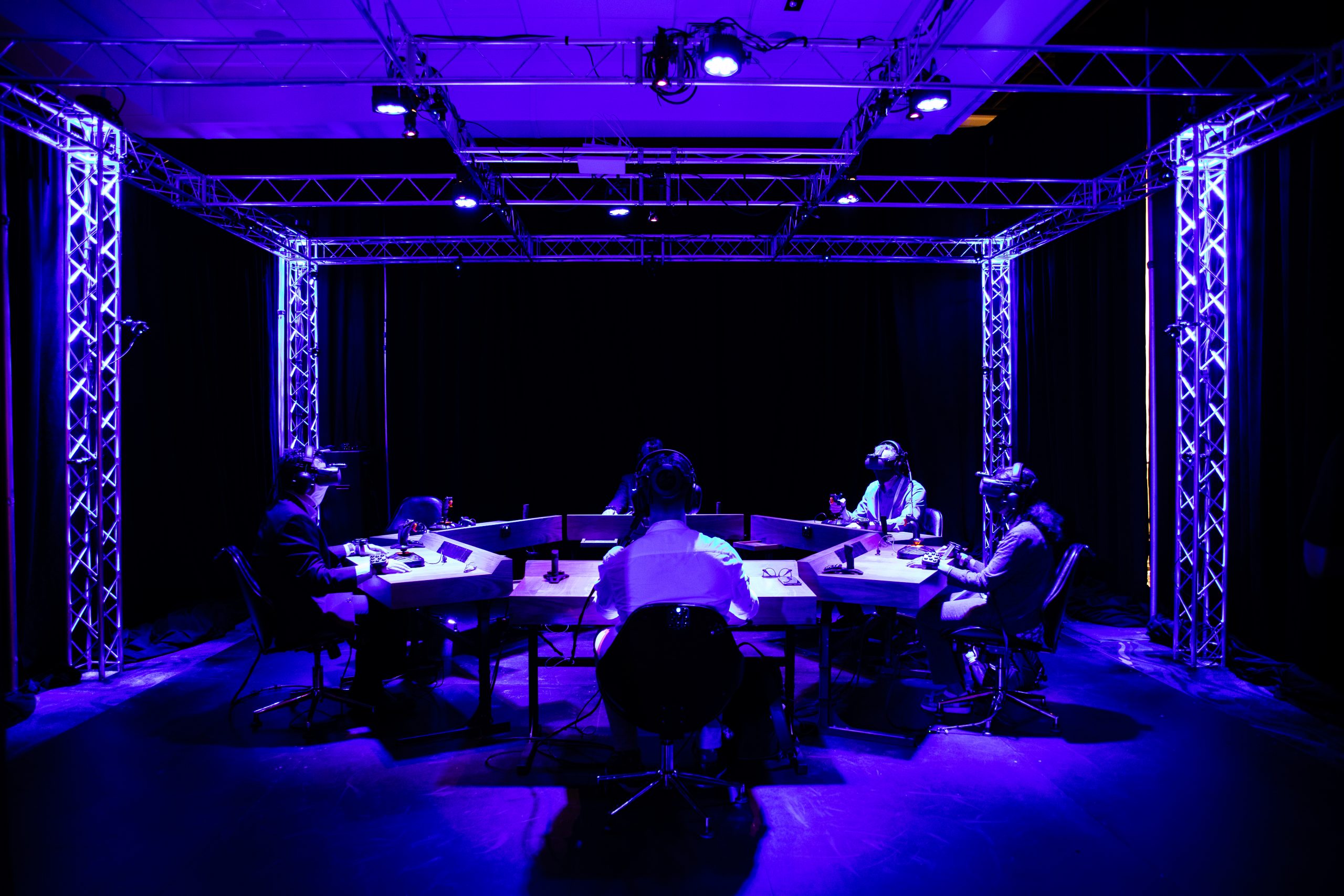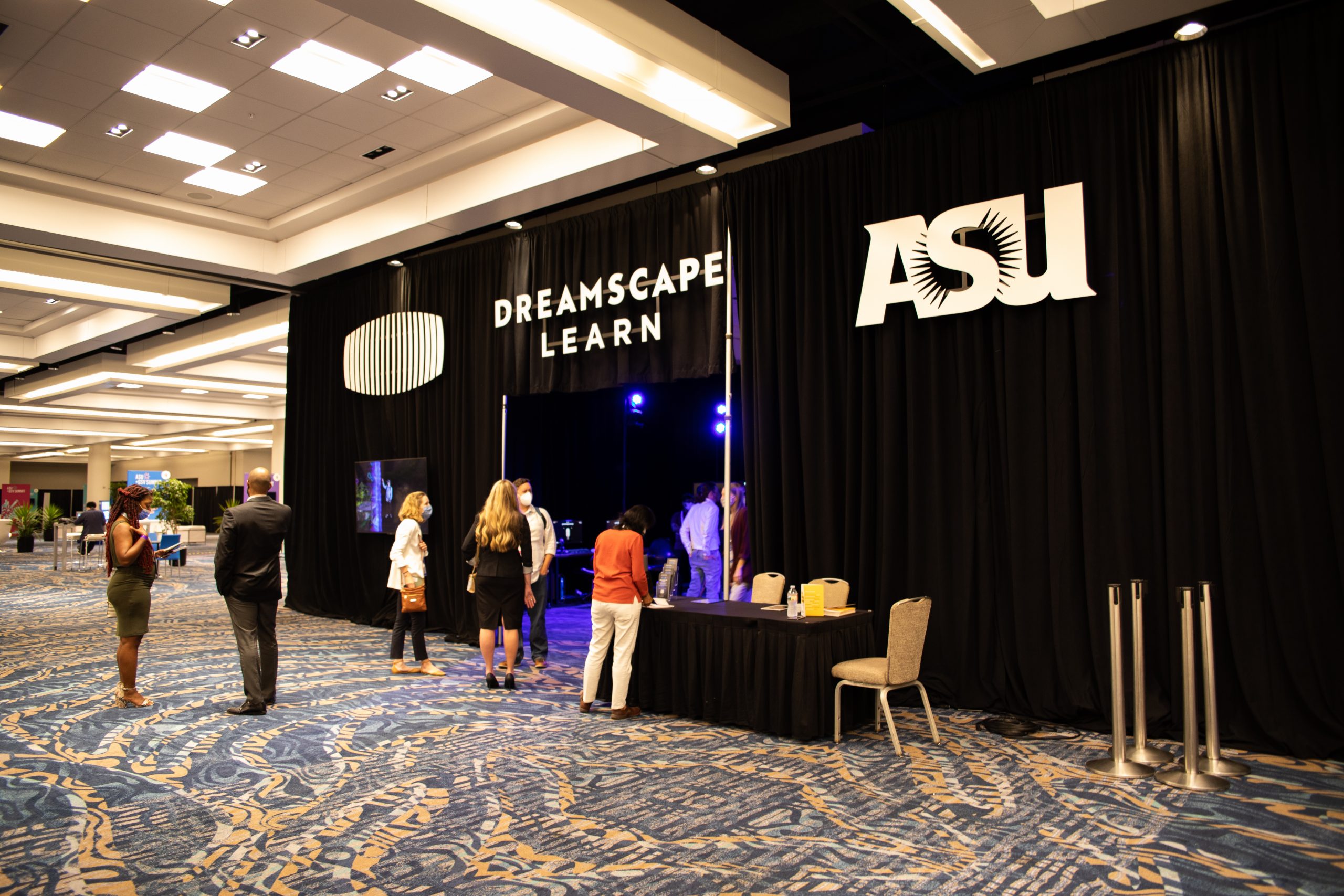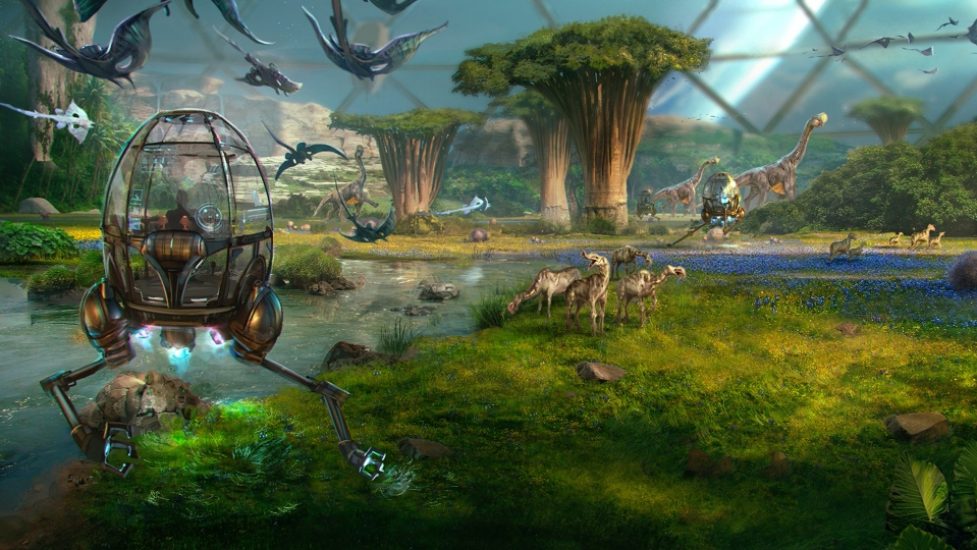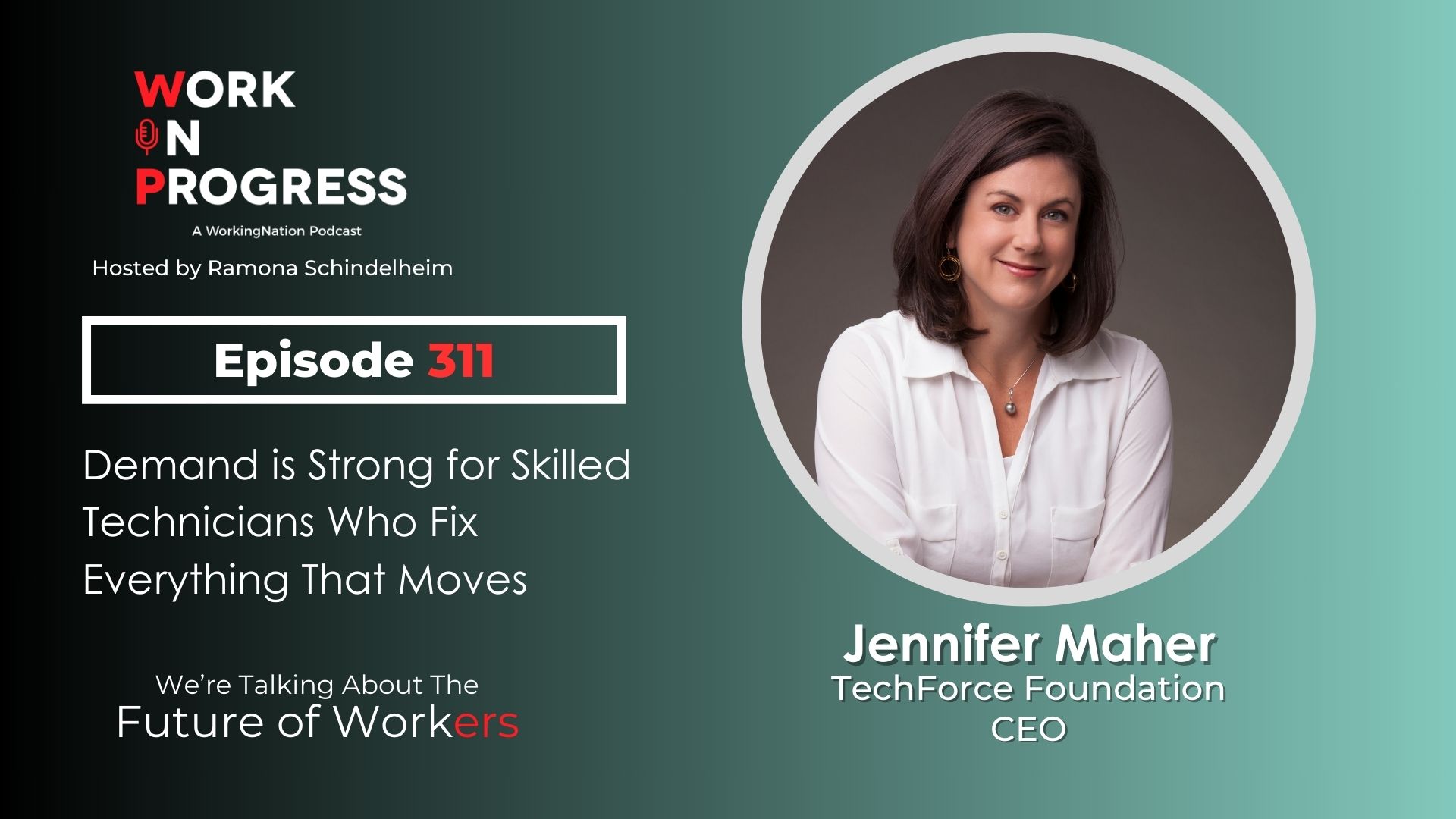When the pandemic forced students and teachers online, it not only changed education as we know it, it accelerated the use of technology to enhance learning. Now a program at Arizona State University is using virtual reality to take its curriculum to a new level.
In January, ASU plans to launch a course using a virtual immersive experience that it describes as a first of its kind in the industry. ASU partnered with Dreamscape Immersive, the VR entertainment company, to form Dreamscape Learn. And the approach has potential to be applied to all kinds of classrooms as well as adult learners in the workforce.
I caught a preview of Dreamscape Learn at the ASU+GSV Summit in August in San Diego and had a chance to speak to Lisa Flesher and Phil Regier about the learning tool and its potential to transform education.


“The reason we did this is because we see how much people engage with entertainment. It happens with movies and with theme parks. And so we wanted to do that edutainment, how can we merge those two things together?,” explains Flesher, Chief of Realm 4, Project Acceleration at Arizona State University.
Flesher describes Dreamscape Learn as a combination of Hollywood storytelling with textbook curriculum.
When Hollywood Storytelling Meets Textbooks
It will make its official debut in an introductory biology course at ASU. Flesher explains biology was chosen because it’s a course where students failed, prompting them to drop out of STEM. Dreamscape Learn is an attempt to improve those outcomes.
The first immersive coursework is based on Dreamscape’s VR experience Alien Zoo. Students will put on headsets in a full body tracking immersive experience as they enter a virtual biology lab.
“When you go into this environment, you are not a student learning something. You are a scientist trying to solve a problem around a particular ecosystem with a particular animal that is having a particular problem. And you’re trying to figure out why that animal is suffering,” explains Regier, the University Dean for Educational Initiatives and CEO of EdPlus at Arizona State University.
Regier adds, “As you go through the modules, as you go through the different scenes, as you go through the different acts, you work to solve that problem in a real virtual, immersive, engaging 3D environment, you believe that you are in an alien zoo.”
The lab is folded into coursework with faculty members. Flesher explains that the immersive experience engages a different part of the brain than traditional textbooks. “And when you’re the scientist and when you’re doing the discovery, it commits to memory in such a different way to engage with you in a way that you are going to remember that not just for the semester, but for long-term beyond your degree. And when you’re into the field, actually working in your job.” says Flesher.
ASU’s Dreamscape Learn: How virtual reality is transforming education
In January, Arizona State University plans to launch a course using a virtual immersive experience that it describes as a first of its kind in the industry. …
Closing Learning Gaps
Testing of the program in pilot groups so far, says Flesher, is showing improvements in letter grades. “A student that would have otherwise failed biology is now getting a C, and somebody that was getting a C is now getting an A and somebody that was getting an A is mastering in their field,” adds Flesher.
The goal, according to ASU, is to make learning more accessible, close gaps in learning and expand Dreamscape Learn to other subjects and to students of all ages. And virtual reality learning as a whole, is showing promise, according to a report from World Bank that looked at available information on the effects of VR when it comes to student learning and skill development. It found that VR instruction, on average, is “more effective than traditional training as a mechanism to develop students’ skills.”
Using Virtual Reality for Job Training
Dreamscape Learn also holds potential to be used for job skills training. Flesher indicates there is interest among employers and she stresses this kind of immersive learning can be applied in many fields. She cites examples of certain military training and healthcare training where in-person learning is not always safe and is costly.
While Dreamscape Learn has its own proprietary features, the use of VR training in the workforce overall is growing. One report estimates that 23 million jobs worldwide will be using VR and AR (augmented reality) by 2030.
While the use of VR is perhaps more well known for technical training, such as flight simulators, a growing number of companies are using it for soft skills training. Bank of America, for example, is one of the latest corporations to announce it will use VR training at its financial centers to train employees on things such as how to communicate with clients.
One study suggests VR is an effective training tool for soft skills training. A PWC survey of managers in 12 locations found that VR training was four times faster compared to a traditional or online classroom. It also found users were more confident to act on what they learned after VR training.
As schools and businesses have come to rely on technology more than ever, there is no turning back as learners step into new, immersive virtual worlds.











